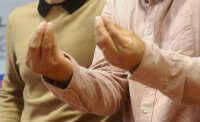An unoccupied mind is a dangerous thing. Organic brain’s powerful processing capacity combined with limitless symbolic creativity of mind gives rise to the need for pursuing purpose and meaning. Lacking these, people veer into forms of madness; hyperactive states of violence against others, self-injury, paranoia, active delusion and mental breakdown.
Of course, people can also unwittingly be led into such unhealthy states through belief systems and cultural forms which promote a type of perverted stability by keeping people confused, off-balance and reactive rather than thoughtful. Mass movements initiated by powerful or influential forces like governments or charismatic individuals have regularly disposed themselves in this manner, giving rise to nationalistic aggression, war and genocide. In these cases, the need of people for purpose and meaning are supplied by destructive abstract rationales hidden within cynical appeals to patriotism or self-protection.
Setting aside such mass movements, however, ordinary life — the daily activity of living — also occupies mind, and it’s imperatives are often fulfilled by ritual. We tend to associate ritual with religious or spiritual activity, often communal: ringing of bells, lighting of candles, saying of prayers, crossing one’s heart, bowing, kneeling and so forth. While these and similar activities constitute ritual forms of behavior, other activities are easily ritualized and regularly incorporated into daily life. We commonly classify repeated non-religious activity as habits, thereby diminishing or dismissing their role in providing purpose and meaning, but they often rise to the level of ritual.
The distinction between habit and ritual is the accompanying nature of mind. Habit is often nearly unconscious in performance, which is to say, happens without any thought or recognition. Twirling hair around a finger while reading, for example, is a habit. While mind and brain are occupied with the symbolic forms of language and its representation in words — forming images, generating emotional responses and projecting reality — the habit of twirling hair, is automatic; a sensory and emotional feedback loop of sorts is at play, but it is not a mindful one.
To rise to the level of ritual, awareness is required. It does not have to be the devoted mindfulness of marking each and every movement or action and associating each of them with particular thoughts, but it does require an overall awareness of our behavior. Sitting at the breakfast table, arranging our food, drink, lighting and the morning paper, adjusting our sitting position; all these can become ritualized behavior, and as such provide meaning. Ritual touches upon the order we create from chaos, a way of transforming confusion into wisdom.
Ritual, of course, can become habit: mindless perfunctory repetition emptied of meaning. But all of us innately seek emotional equilibrium or sense of contentment, and ritual helps provide that. Habit, on the other hand, is mindless self-soothing behavior the benefits of which generally are of short duration. When connected to mindfulness, ritual can inform and sustain us for hours, days, weeks or an entire lifetime.
Social ritual first established and still sustains a healthy society. The “please” and “thank-you” of ordinary life bring order to the chaos of interacting with strangers. Such niceties need not simply become habits of speech; rather, they can provide genuine moments of aware reflection of the supportive and compassionate role we can play for each other. Thus each and every word we say or action we take can assume the healing role of ritual.







Be First to Comment